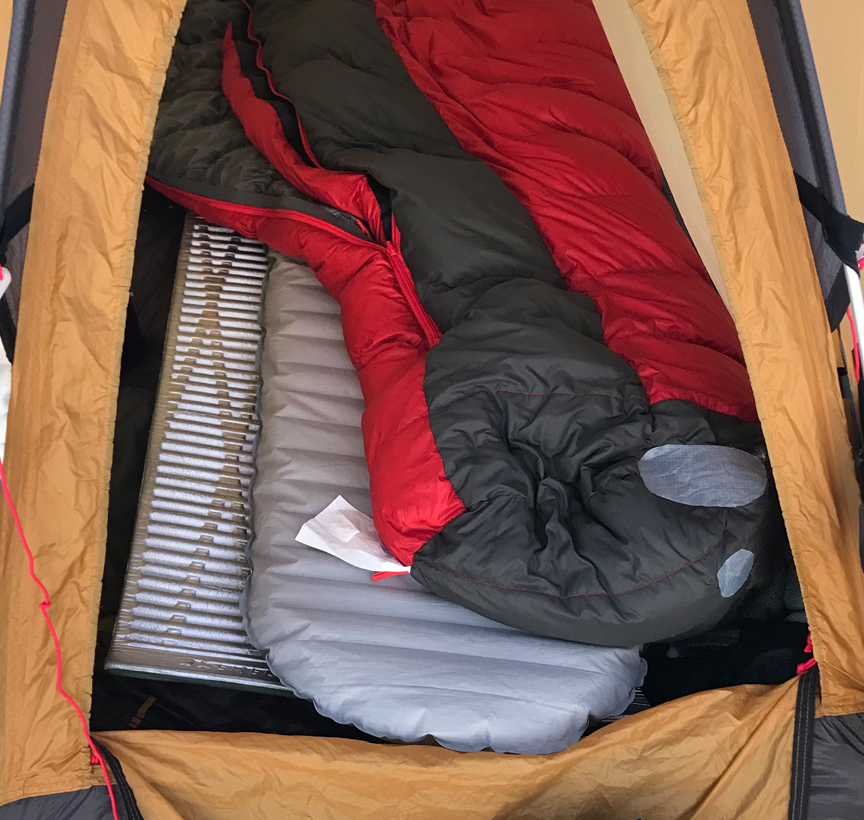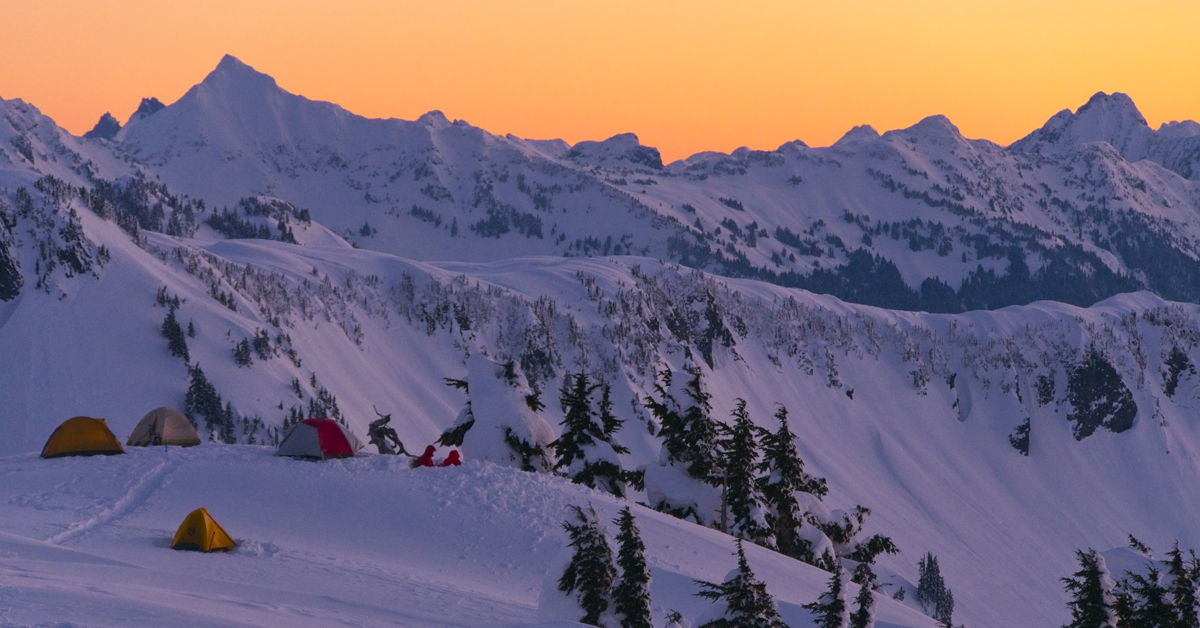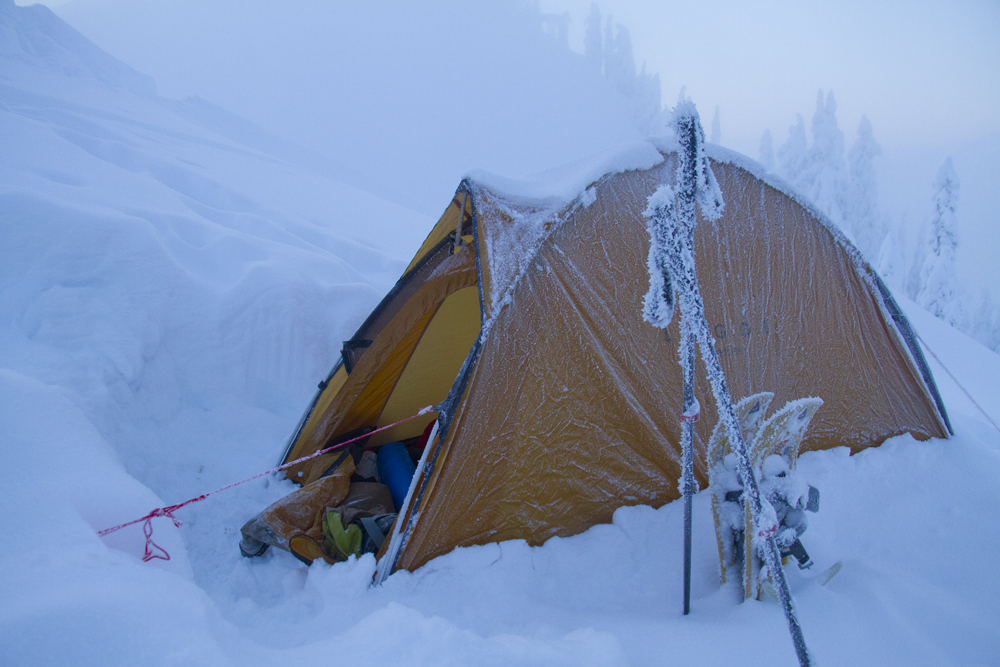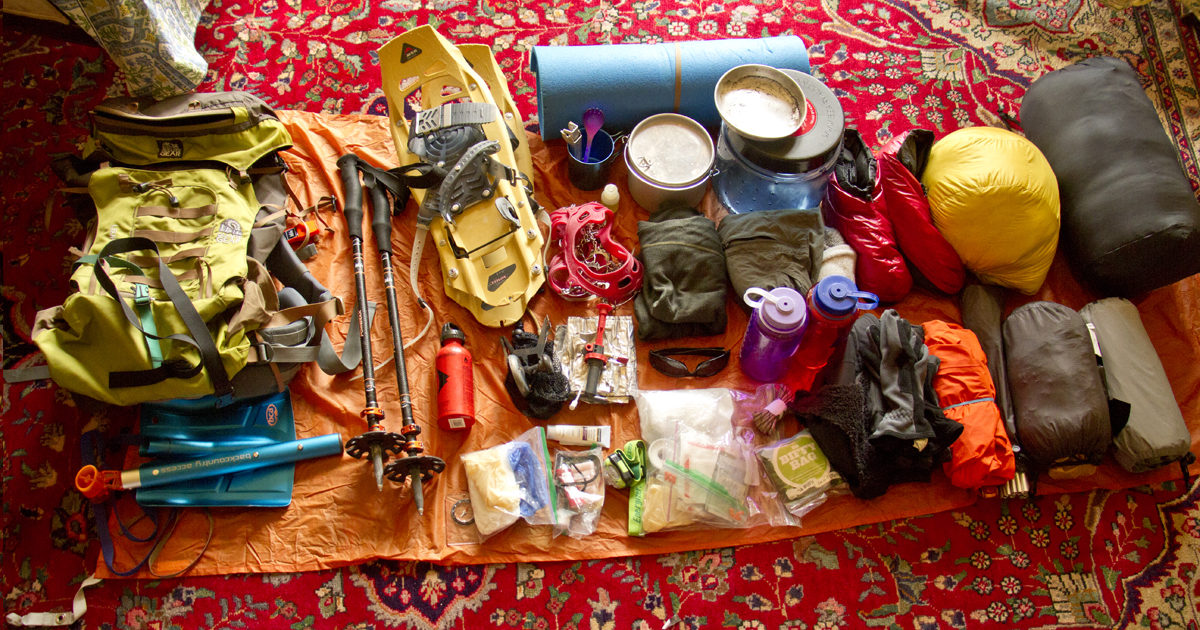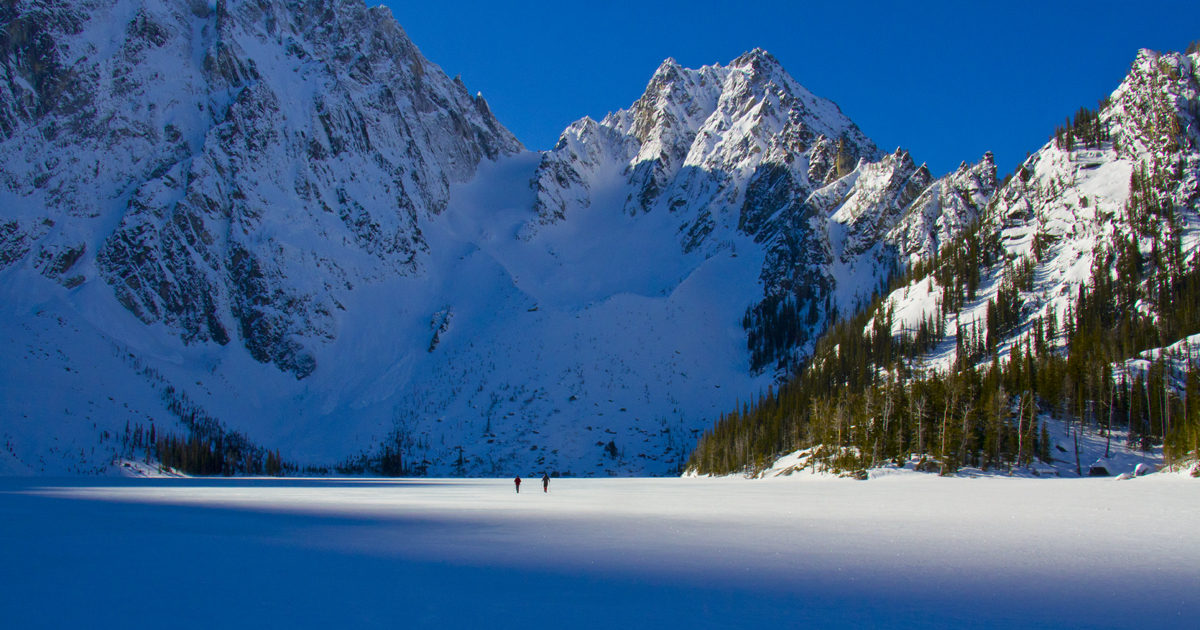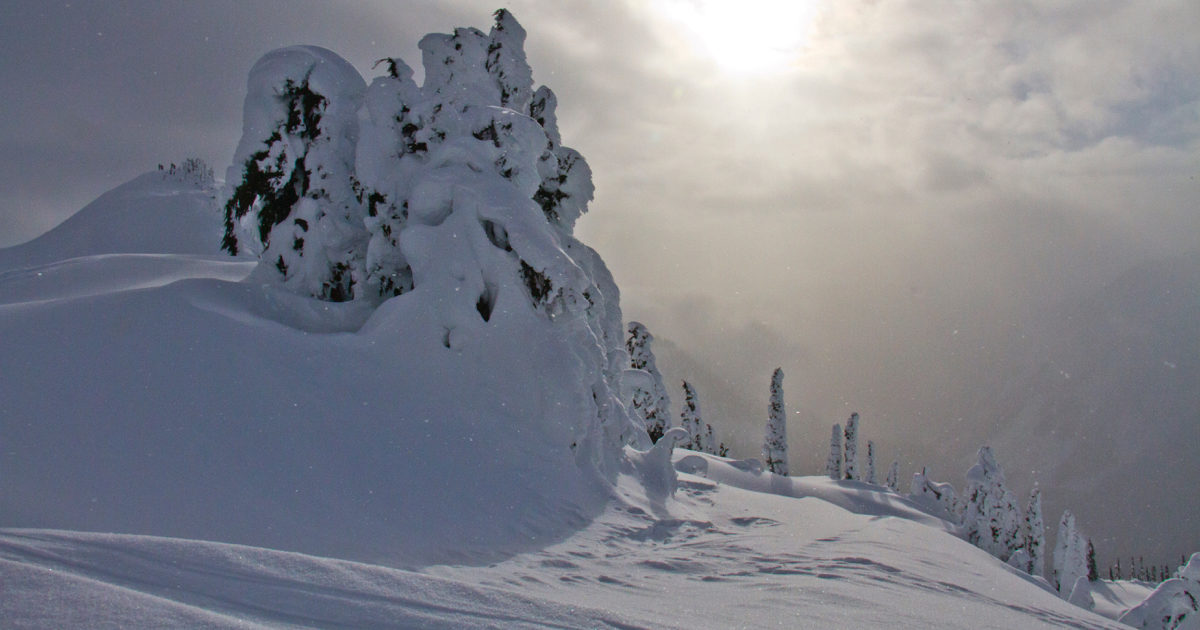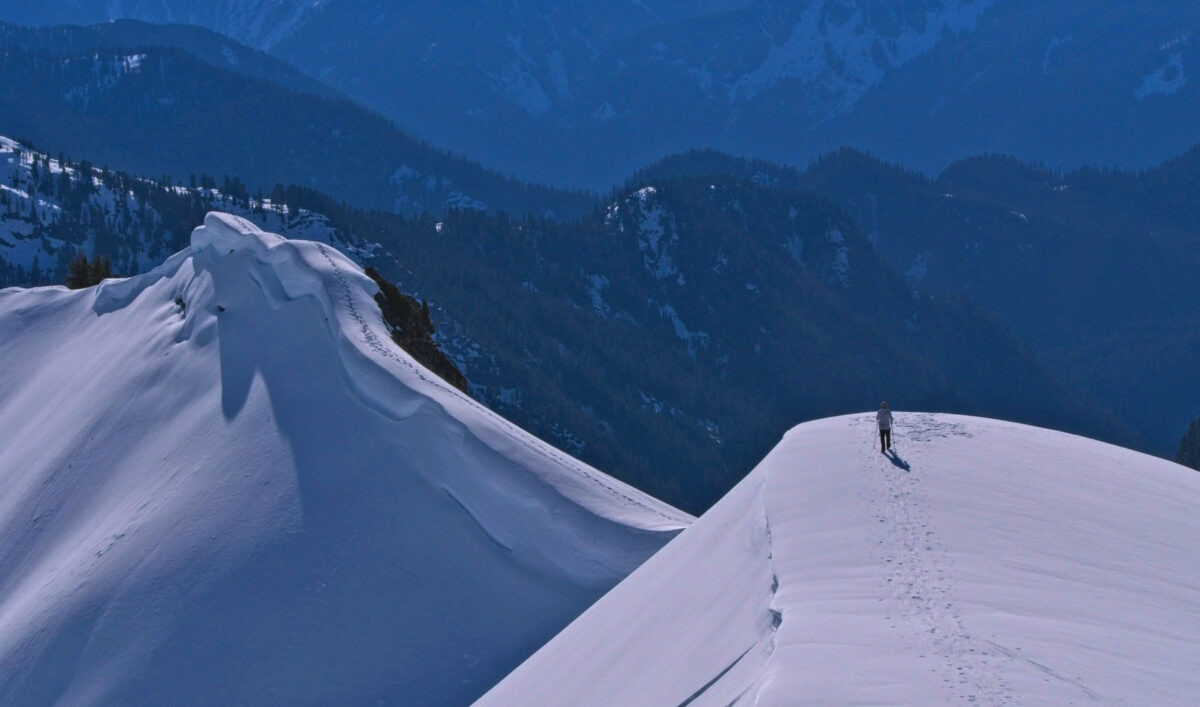1. Camp on snow
Be equipped to camp on the snow. Once you learn how to do it and how comfortable it is, you may never want to camp on the ground again. To do this, you need a sleeping system with sufficient R-value (5+) under your sleeping bag. The standard practice for snow camping in the Pacific Northwest is two mattresses, either one solid core and one air or two solid ones.
Snow is soft and clean, usually free of sticks and rocks. It makes the most comfortable surface and often requires no preparation. Sometimes you might need to stomp it down a bit with snowshoes or level it with a snow shovel. It is easy to level a spot even on slopes. Pitching a tent on the snow is the lowest impact (leave no trace) way to camp. It also increases your campsite options (unless you are in an area where designated campsites are the only permissible locations). And, it is often the only option if you want to camp in the winter season. So be prepared!
For more on sleeping warm, see winter sleeping bags.
